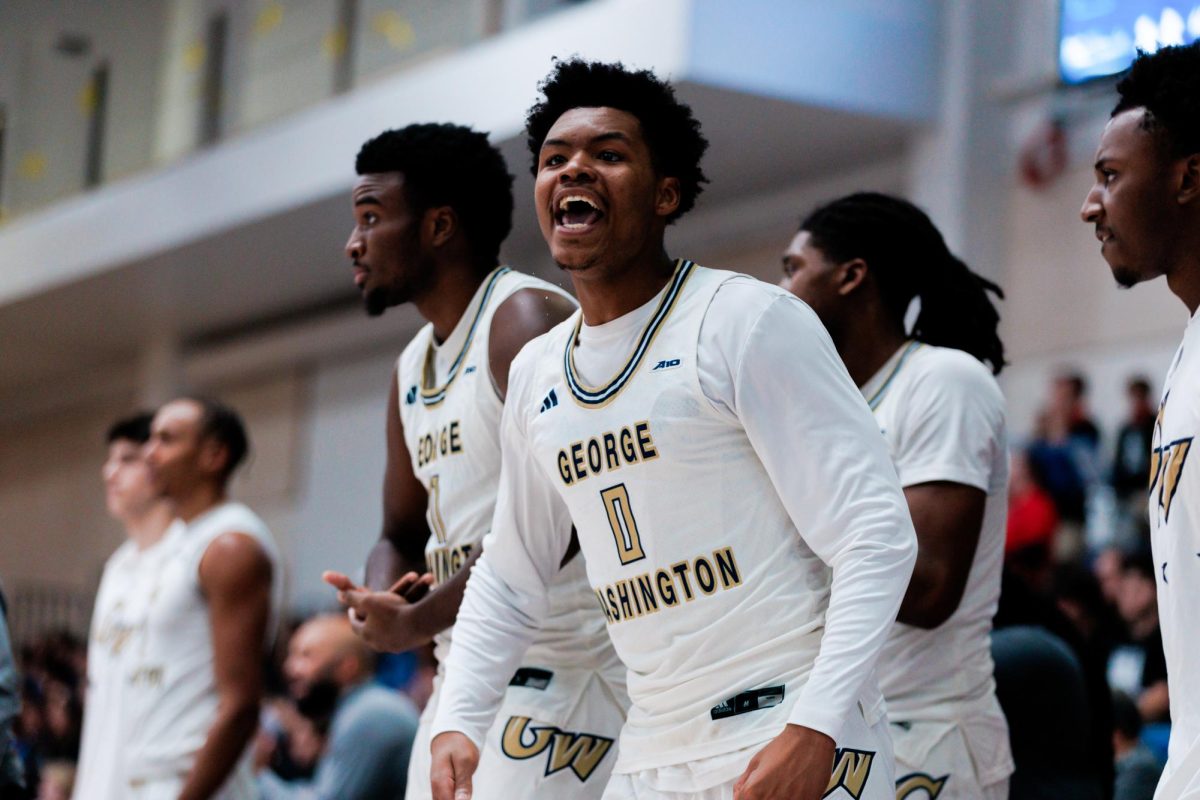Finally, the Atlantic 10 has been caught amidst the flurry of expansion that has bombarded the ranks of college athletics. What started out as the Atlantic Coast Conference ransacking the Big East for its top football schools, Miami and Virginia Tech, has now snowballed into a larger domino effect. The question is: What does that have to do with GW?
As with all college sports, money is the driving force in every decision. The ACC picked up Miami and Virginia Tech because they would conceivably give the league its own BCS bowl game, an instant promotional advantage that would give all the league’s universities a nice purse. For the same reasons the ACC snatched two teams, the Big East will look to expand by snagging up four Conference USA teams- Cincinnati, Louisville, DePaul, and Marquette- to increase its elite basketball status.
With the Atlantic 10 now thinking about expanding to 14 or 15 teams and possibly becoming a three-division conference (which would make the A-10 the biggest conference in the country), GW can now assess how it can benefit from all of this.
The most reasonable thing for the Atlantic 10 and GW to do would be to bolster their basketball-rich conference by adding Charlotte and St. Louis from Conference USA and then Boston University (a team that is often on GW’s non-conference schedule anyway) from the American East Conference.
By doing this, the A-10 would make its in-conference schedule much more formidable, which would increase every team’s RPI rating. This scenario solves the problem of getting solid non-conference opponents to come to the Smith Center and other smaller A-10 arenas. Building up in-conference competition should also lead to more respect in the polls and, potentially, more NCAA Tournament bids and televised games.
But basketball should not be the only consideration for GW.
With the current domino effect taking place, the University and the A-10 must think long term, not short term. In the short term, expanding this conference solely on basketball schools is a nice idea. But, in the long term, GW and its A-10 counterparts must decide if they ever want to become a more competitive football conference as well, for who knows when the next big realignment will take place in college sports.
The big, money-making venues in college sports are hands down football and basketball, so why should GW and the Atlantic 10 hinder themselves from the future development of becoming a solid college football conference? GW should begin to consider fielding a football team for the first time since 1968.
In Washington, the only local college football teams are found at Georgetown, Catholic and Howard and all three have remained in relative obscurity to D.C. residents. The Colonials could have success in a city that could use a college football team to get behind. GW officials could try to work themselves back into the good graces of District residents and officials by making use of RFK Stadium (which now boasts MLS soccer as its biggest attraction) and beginning to develop a football team.
The A-10 could target the Mid-Atlantic Conference and hone in on two-way schools such as Toledo, Miami of Ohio and Marshall. Then, in a balancing act of football and basketball conferences, grab Boston University. This plan would keep the A-10 at two eight-team divisions and would stay in the Atlantic 10’s traditional geographic region.
Miami of Ohio and Toledo are both Ohio schools, which could help convince Xavier and Dayton (two schools that the Big East had also been looking at) to stay in the A-10 should the issue of conference realignment come up again. And, although it would be a stretch to land them, Marshall is a West Virginia school.
All these schools, with the exception of BU, are amazing two-way schools that could help propel a football movement within the A-10. With football and basketball programs both in mind, the A-10 can become a much more fan-friendly and flourishing conference.
Critics would say that amidst budget cuts, how could GW and other non-football A-10 schools deal with the enormous expenses that a football team would bring?
Developing a football program would be an investment, but an investment that could ultimately bolster GW athletics as a whole. Big-time football programs help recruitment for big-time basketball programs (look at the ACC), and maybe a football team is needed to take GW and company into the elite class of college athletic programs. If there is no interest in football from all the schools in the A-10, you can still have a 16-team basketball conference and a smaller football conference.
While the additions of schools like St. Louis, Charlotte, and Boston University would be good for the Atlantic 10, the conference as a whole should think bigger. Schools like Miami of Ohio and Marshall could be outstanding additions that could raise the bar for A-10 athletics, both in basketball and football.






